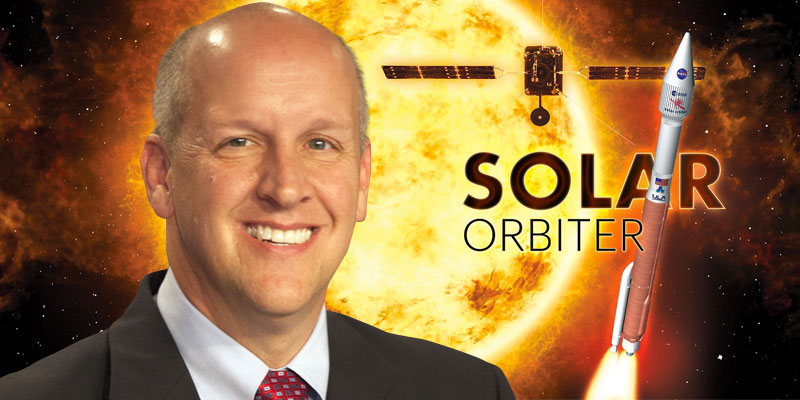By the time NASA’s Solar Orbiter launches late Sunday night, Alabamians will have left an indelible mark on the historic mission.
Solar Orbiter is a spacecraft that will deliver never-before-seen views of the Sun while providing new information on how the star affects space weather. Scientists hope to collect data which will help the gain a better understanding of the sun’s behavior.
A United Launch Alliance (ULA) Atlas V rocket, built at the company’s 1.6 million square foot plant in Decatur, will deliver the spacecraft to orbit.
The person responsible for overseeing this momentous and complex mission is Tim Dunn, a native of Arab.
Dunn, launch director for the Launch Services Program (LSP) at NASA’s Kennedy Space Center in Florida, plans, implements and directs the launch campaigns of science and robotic spacecraft for NASA-managed launch vehicle services.
A veteran of the U.S. Air Force and graduate of the University of Alabama, Dunn reflected on the mission at Friday’s prelaunch press conference in Florida.
“I’m especially proud of our team for the Solar Orbiter mission,” he said. “Working alongside our United Launch Alliance colleagues, the engineers and analysts of NASA LSP who take great pride in launching this international partnership mission. A scientific marvel that, among other science, will provide unprecedented views of the Sun’s poles. NASA LSP has a demonstrated record of success flying on the Atlas V. To date, we count seven missions successfully launched on this magnificent rocket.”
He outlined that Solar Orbiter will be the 18th NASA science mission on an Atlas V and the 81st overall mission on ULA’s workhorse vehicle.
Solar Orbiter is an international partnership mission between NASA and the European Space Agency (ESA).
Dunn spoke to the uniqueness of this arrangement.
“The Solar Orbiter launch campaign has been unique and memorable,” he stated. “As an international partnership mission covering many years, we, the launch team, have encountered cultural and operational differences, as well as some communication challenges. But the entire team has always found common ground and moved forward toward launch because we all speak the universal language of mission success.”
ULA’s Atlas V will accelerate Solar Orbiter to 27,000 mph as it makes its way to the inner solar system. The spacecraft will then reside in an elliptical orbit and make a close approach of the sun every six months, going within 26 million miles of the star’s surface.
Cesar Garcia, ESA project manager, expects Solar Orbiter to spend approximately 10 years surveying the sun and its atmosphere.
This is the second mission in as many years that ULA has powered to the sun. In 2018, one of its Alabama-built Delta IV Heavy rockets launched the Parker Solar Probe. The spacecraft achieved a milestone recently when the probe passed within 11 million miles of the sun. No spacecraft had ever flown that close before.
This specific Atlas V configuration has been used previously on five other launches, according to Scott Messer, NASA LSP program manager for ULA. He explained the rocket stands about 189 feet high, a height he compared to six school buses stacked end-to-end.
“We at ULA are very proud to deliver Solar Orbiter to its orbit and continue to reliably deliver our nation’s most important spacecraft for all of our customers with 100% mission success,” Messer concluded.
The Solar Orbiter launch is scheduled for a two-hour window beginning at 11:03 p.m. EST on February 9 at Cape Canaveral Air Force Station in Florida.
Tim Howe is an owner of Yellowhammer Multimedia
Don’t miss out! Subscribe today to have Alabama’s leading headlines delivered to your inbox.
